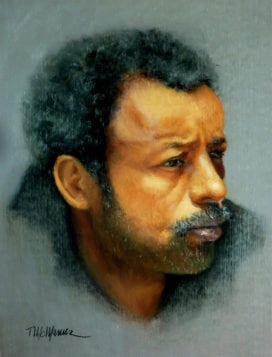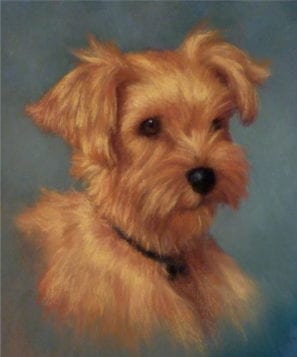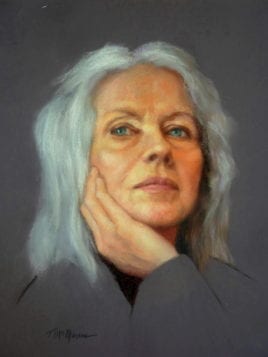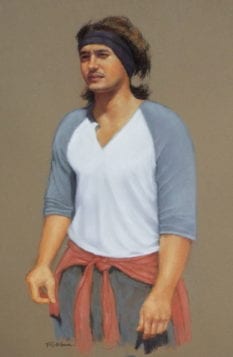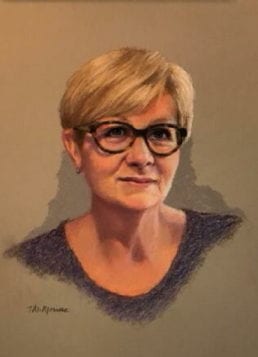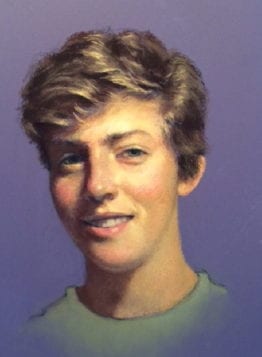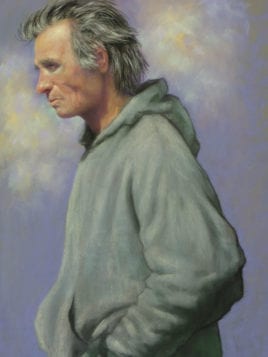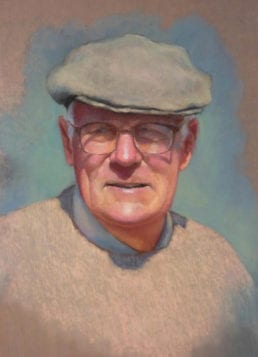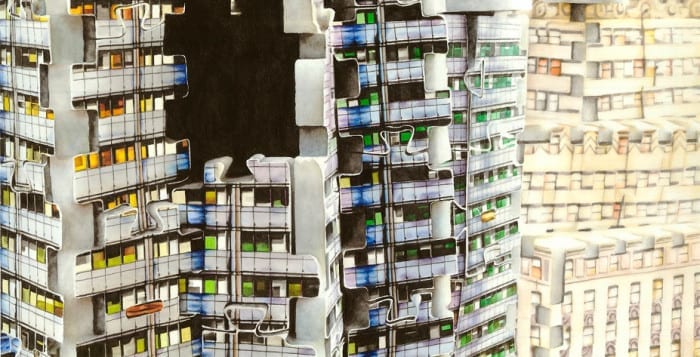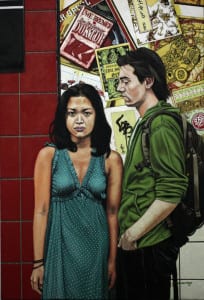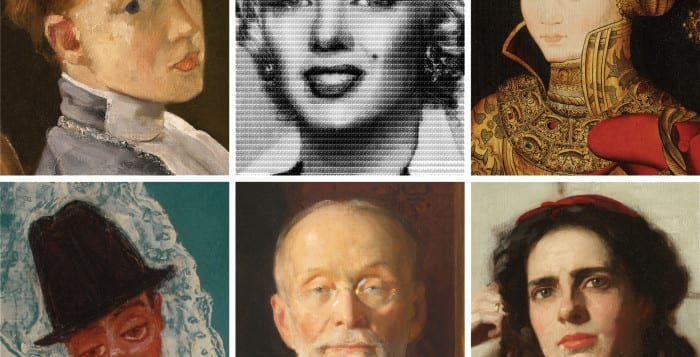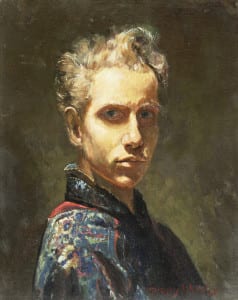By Irene Ruddock
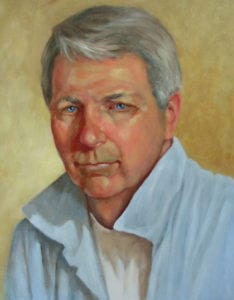
Terence McManus is a retired social worker with a master’s degree from Adelphi University. A self-taught artist, he has participated in over 100 exhibits and juried competitions winning over 60 awards. He has had portraits exhibited at the Butler Institute of Art and at the Heckscher Museum. McManus is a signature member of both the Pastel Society of America and the Connecticut Pastel Society, and a member of the prestigious Salmagundi Club in NYC, as well as other art organizations across the country.
Recently, I was able to interview McManus at his studio.
How did you decide to become an artist and, specifically, a portrait painter?
I can’t remember not considering myself an artist. When I was in the first grade, I remember proudly telling people that I was an artist. And even as a young child, it was a person’s face that fascinated me and I copied faces from magazines. In high school I did posters of friends running for elections, in college I did portraits of my friends and their girlfriends, etc.
Was there someone who influenced you?
When I was 10, I was thrilled to get my Jon Gnagy set of drawing instructions, but, seriously, I have not had any formal art training. The one art course that I took in college was a disaster because the instructor was an abstract artist and I was a Norman Rockwell fan! Instead, I have learned from books, videos, magazines and demonstrations and practice.
Can you demystify the art of portraiture?
In painting a portrait, it is important to make sure the features are positioned correctly. I leave out details when starting a painting, except I paint the eyes in quickly. With the person looking back at me, I feel a connection with the subject. After I sketch in the positions, I apply the pastel or paint in the traditional manner, going from darks to lights. I frequently view the portrait backwards in a mirror to see the painting from a different perspective which helps to check on accuracy. Once the positions are correct, doing a portrait is not so different from doing a still life. You can use any color you wish, but you must have the values correct. Just look for the light and dark values, and like a puzzle, it would come together.
If you paint from photographs, what is the single most important thing that must be present in that photograph?
I prefer to use my own photos since using the photos made by others is their vision, not mine. I look for how the light hits the face, creating drama and the feelings I wish to bring out in the painting.
In this increasingly image-conscious society, how do you compete with photographs and why are painting portraits different?
A good photographer can capture real emotion, but most are just an image of the person for that second. A portrait artist usually tries to bring out the subject’s life experience. The artist can add or subtract or emphasize different aspects to reflect this.
What is the hardest part about painting a portrait?
It depends if I am painting for myself or for a commission. When it is for myself, I am trying to capture a feeling more than accuracy. With a commission, it is the exact likeness that is most important to the client, but I still aim to paint a good painting that can stand by itself.
Do you like painting animals?
I love painting animals. How can you not love those eyes looking at you? But like humans, aside from the eyes, their body language can convey much as well.
In your view, what is the magical element that makes for a great portrait painting?
It is the intensity of the emotion that comes across and how well it is done, regardless of the style that makes for an interesting and unique portrait.
Are there any portrait artists’ work that you feel personally drawn toward?
I love Rembrandt for his dramatic use of light, John Singer Sargent and Thomas Eakins for their realistic but painterly portraits, Alice Neel for her unique expressive style and Burton Silverman for his outstanding portraits.
If you could paint a portrait of anyone, whom would that be?
Alexander the Great! Educated by Aristotle, king at 20, ruler of most of the world by 30. What strength and determination would his face reveal!
How can you be contacted for commissions?
I may be reached by email at [email protected].
All images courtesy of Terence McManus

